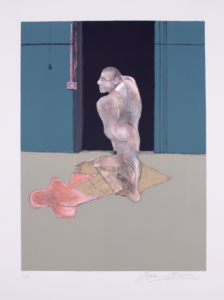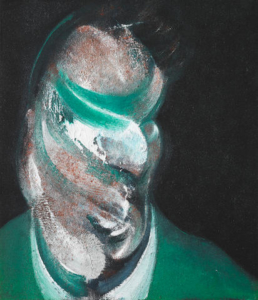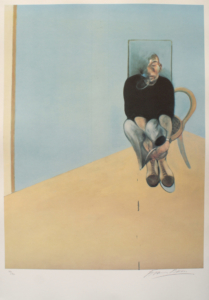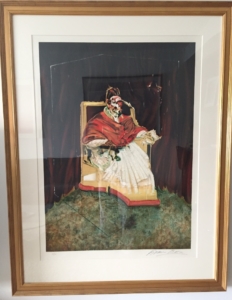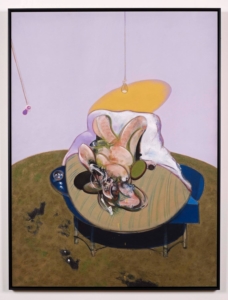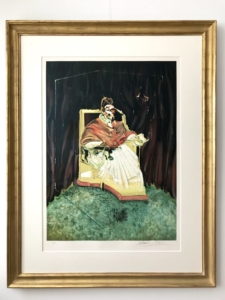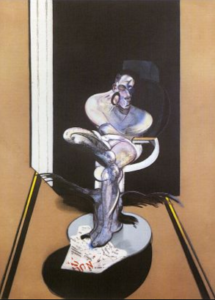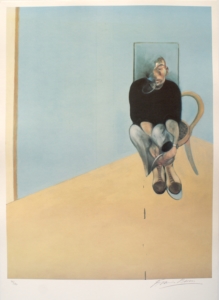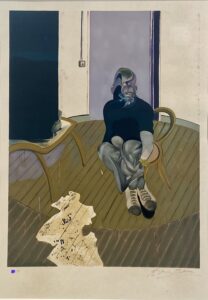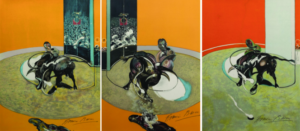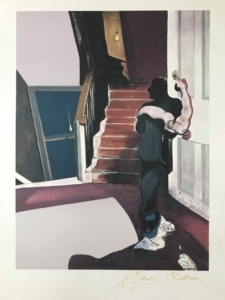Figure writing reflected in a mirror, 1977
Unsigned and unnumbered.
A beautiful scarce printers proof on Arches paper with cross marked in the margins to set the lithograph straight and markings to set the colors. With deep and vivid colors.
Accompanied by a certificate of authenticity (COA) from Mourlot.
40 x 28 1/2 inches (102.0 x 72.5 cm.)
All works are inspected prior to delivery, work will be sent out tracked and insured at buyers cost. If you'd like to make specific arrangements or discuss collection then please contact us directly.
Accepted: Wire transfer
ART PLEASE Assurance Policy: Every ART PLEASE seller has been approved by ART PLEASE after a thorough review. All of our sellers are required to accept the following ART PLEASE policy: A buyer may return an item purchased through ART PLEASE, if the item received is not as described in its listing, or is found to be unauthentic.
Francis Bacon is one of the most recognized figurative painters of the 20th century. His unique approach to painting has been influencing artists like Jenny Saville or Damien Hirst. Bacon's signature style is characterized by an energetic and visceral way of painting, with flat backgrounds and a powerful sense of motion. Exploring the human figure in its most distorted aspect, his imagery is often defined as terrifying because of the emotional physicality he attributes to each brushstroke. For Bacon, life inspired art, drawing on the themes and people that surrounded him and on the feelings that were found within him. He aimed to create art that challenged the viewer and resonated with his own personal world. Considered one of the most important British painters of modern age, Bacon’s paintings are among the world’s most valuable works of postwar art.
Featuring the figure of a man sitting at a desk and melancholically writing with his backside reflected on the nearby mirror, this lithograph is regarded as one of his most painterly pieces. Bacon blurs the line between color and line, reality and appearance, physical matter and energy. As Gilles Deleuze pointed out, ‘Bacon's mirrors can be anything you like - except a reflecting surface’. Produced in the subsequent years of his lover’s tragic suicide, this piece is inscribed among his most poignant bodies of work.



